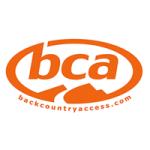Clothing: Carry items that are breathable, allow flexibility, resist wind and water, and based on a layering system. Please confer with your guide about specific clothing combinations and/or if you have any questions regarding your gear.
- Boots – Rigid synthetic or leather mountaineering boots. If Mt. Blanc is on your itinerary you will want to include a pair of insulated boots.
- Approach shoes -A beefy pair of hikers for doing climbs on the non snowy side of the Chamonix valley. You might cross some small sections of snow in these, but you will also carry them in your pack on climbs.
- Gaiters – Optional. Ankle high gaiters are recommended.
- Socks – Wool or synthetic. Avoid cotton. A single heavy weight pair is best. A pair of liners with a medium sock also works well. Bring a spare set.
- Pants – Synthetic preferred. Pants made from Schoeler Fabric such as Patagonia’s “Simul Alpine” pants are great options.
- Long Underwear – Top and bottoms: Capilene or polypropylene recommended.
- Lightweight shirt – A lightweight fleece (Patagonia’s R1) or wool shirt.
- Jacket – Synthetic, pile or wool. Patagonia’s “Nano Puff” or similar synthetic is a great option as its lighter, warmer and more packable than fleece.
- Shell gear – Gore-tex parka with hood and pants as lightweight as possible. These will live in your pack for much of the trip. Side zips on your pants are nice for pulling on over boots.
- Gloves– Two pairs: one insulated with shell, the other lightweight, such as a windstopper fleece or nordic ski glove with a leather palm. For climbing programs mittens are not recommended. If your hands get cold easily we recommend warm gloves with chemical hand warmers.
- Sun hat – Quick drying preferable.
- Warm Hat – A wool or fleece ski hat that fits under your helmet.
- Street clothes and shoes – For time spent in town. It’s nice to have a collar shirt or two for going out to eat.
- Shorts and T-shirts – For hiking and climbing around the valley floor. It’s still summer down in town!
- Climbing Gear
Much of this gear is available for rent or purchase in Chamonix or Zermatt.
- Crampons – We suggest a standard flat frame alpine crampon such as the Black Diamond Sabretooth or the Grivel G12. You will also need rubber anti balling plates (called antibottes) specific to your crampons. Many crampons come standard with these. Bring a small lightweight stuff sack for storing your crampons in your pack. You won’t need a heavy case with padding and zippers.
- Ice axe – A general all purpose ice axe. We recommend a short axe with an aggressive pick. For example, the 50 cm Black Diamond Venom is the perfect Alps tool.
- Approach Shoe Crampons – If you have a pair of strap on crampons (these can be aluminum) bring them along, otherwise let us know and we may be able to provide some.
- Climbing Harness – A versatile, lightweight harness is best. Ideally one with a belay loop and adjustable leg loops. Gear loops are critical on the harness.
- Carabiners – Bring 2 lockers and 2 non lockers.
- Belay/ Rappel device -Plate type device like the Black Diamond ATC or the Petzl Reverso.
- Rock Shoes – These should be comfortable shoes that can ideally be worn with thin socks.
- Helmet – Must be specific for climbing/ mountaineering.
Miscellaneous Gear:
- Pack -Around 2,000 cubic inches or about 30-35 liters is ideal. Much bigger and the pack gets too heavy and does not climb well. This is merely a day pack as you won’t be carrying camping gear.
- Headlamp – A necessary tool for early starts. One of the new lightweight LED models is great for nighttime climbs.
- Food – Lunches and favorite snacks. An adequate amount for high-energy days. Lunch food can be purchased in huts or in town. This usually consists of Bread, cheese, salami and chocolate. Stock up on energy bars or Gu in the states if you use these snacks
- Water bottles – Carry at least a quart. Many people like to carry 2. Collapsible bottles like the platypus take up less room in your pack as you drink water. Hydration bladders work well.
- Sunscreen/ lip protection – SPF higher than 30. A small tube should last the entire trip.
- Sunglasses – With 100% UV protection. Consider wearing with retention straps. Changeable lenses are great for variable light conditions. Smith’s slider series offers this option. Dark lenses are a must and many people use side shields as well.
- Personal med kit – Mostly just for blisters and hotspots. Molefoam, athletic tape and Spenco’s second skin all work well. Your guide will carry some of this, but bring some of your own if you are prone to foot issues. You may also want to consider bringing a small amount of Tylenol or ibuprofin, antacids (ie- Pepto Bismol, Rolaids) and a few Bandaids.
- Pocket Knife – Simple and Light. Mostly just for cutting bread and cheese.
- Duffel Bag – For leaving gear in hotels while in the mountains.
- Money – Most huts require cash. ATM cards are a good way to get cash in country without paying an exchange fee. Be sure to memorize your PIN as a series of numbers as the letters are not always on the cash machines.
Optional Gear:
- Trekking Poles – Adjustable poles are great for improving balance, saving energy and sparing your knees. The 3 section poles or the new tent pole style poles like the Black Diamond Z-Pole are nice because the fit inside your pack while climbing technical terrain. Keep them fairly short so that your hands are below your navel when standing on flat ground. HIGHLY RECOMMENDED!
- Camera– Most likely you will want to document this great adventure. Try to get a carrying case that fits on your pack and will not interfere with your climbing. If you keep your camera inside your pack you won’t take many pictures.
- Ear Plugs – Some people like these to sleep in noisy huts.
- Goggles – If planning an ascent of Mt. Blanc, goggles are recommended. Neck Gaitor – In Europe a product called a “Buff” is extremely popular and can work for everything from a neck gaitor to a hat, to a headband, to a balaclava. Ask your guide for a short demo of the many uses of a Buff.
- Toiletries – Keep it simple. A tiny tube of toothpaste and travel toothbrush is all you will need for nights in huts. A few wetwipes will feel like a real luxury.
ncmg-the-alps-equipment-list.pdf65.01 KB






